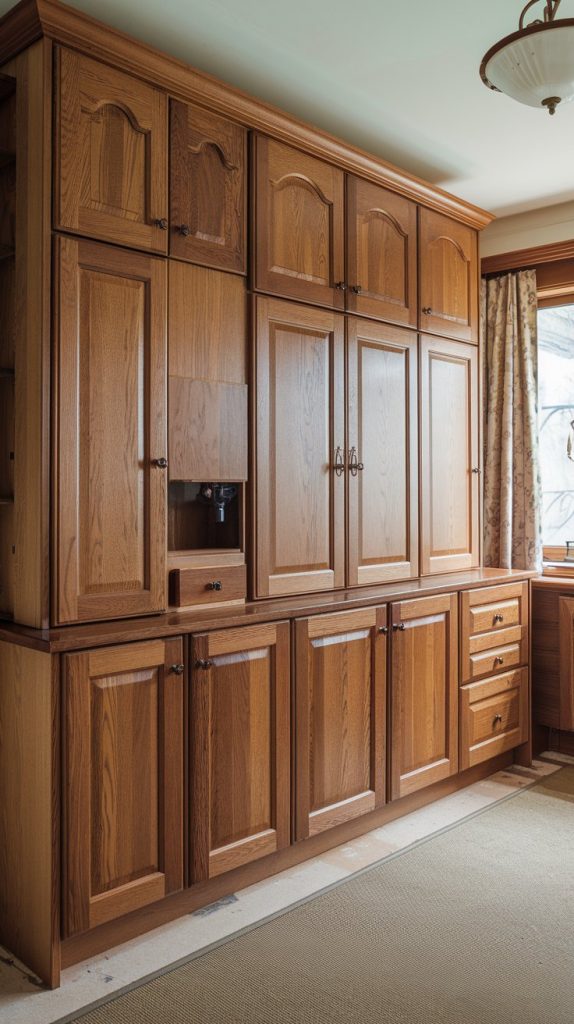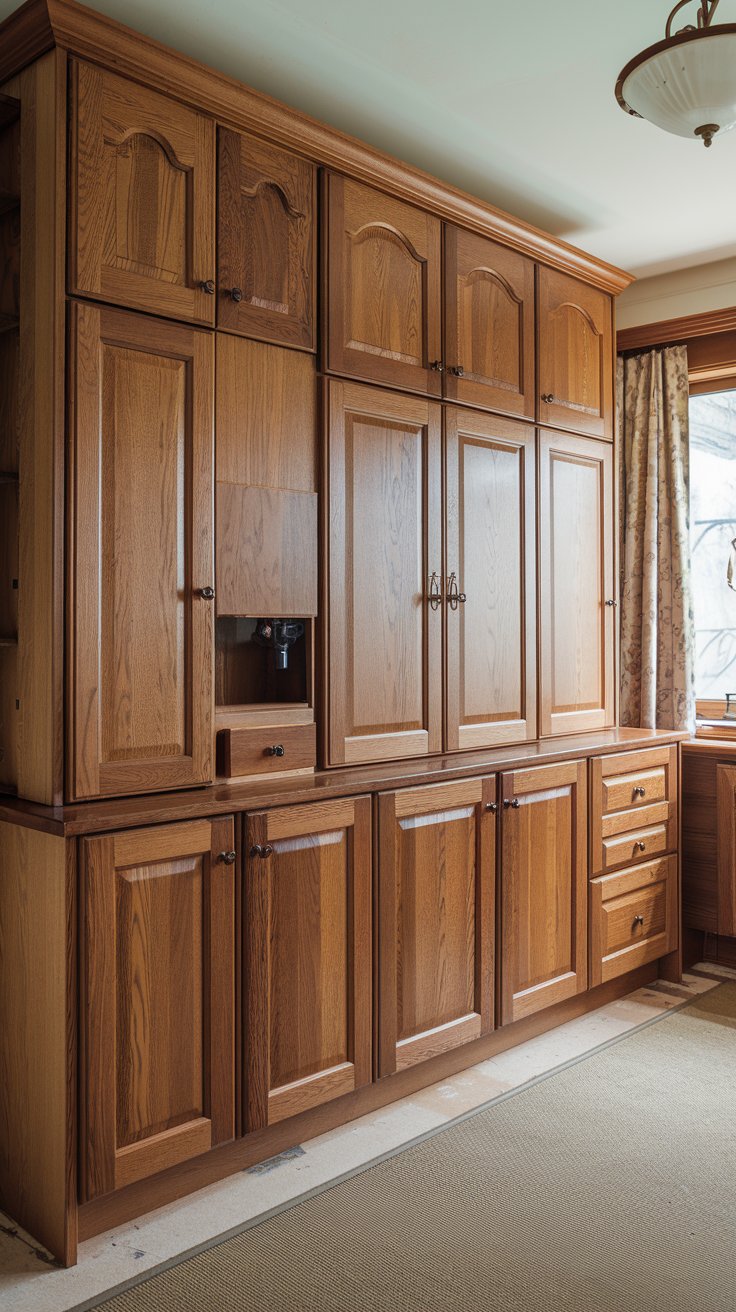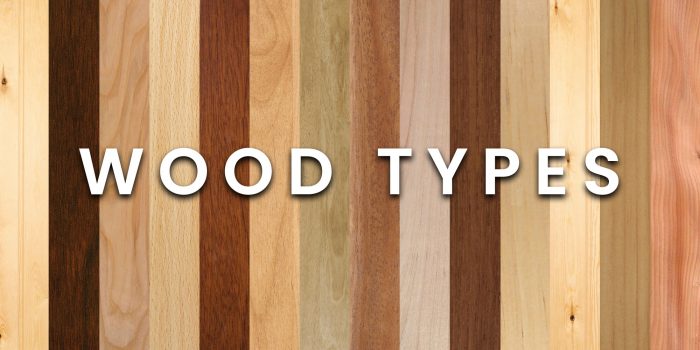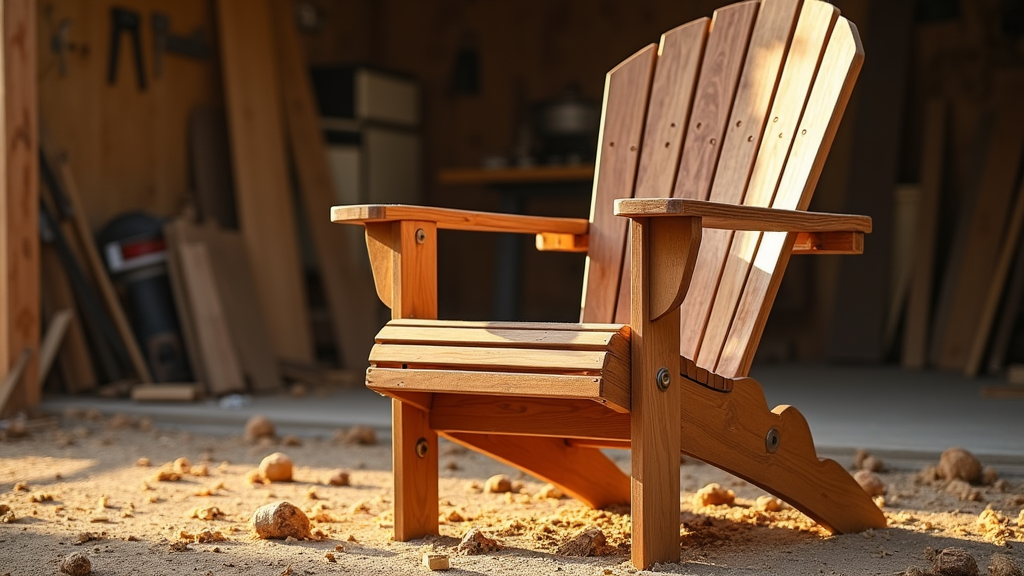Feeling overwhelmed by endless cabinet options for your kitchen transformation? You’re not alone. Cabinets are the backbone of any kitchen remodel, making this decision crucial.

Over a quarter of a kitchen remodel budget typically goes towards cabinets. This significant investment demands careful material selection, and options range from classic solid wood to modern stainless steel.
The perfect cabinet material balances durability, style, and budget. Your choice can make or break your kitchen’s aesthetic. It should align with your desired look, whether sleek and contemporary or warm and traditional.
Let’s explore custom cabinet materials, from timeless maple to modern MDF. This guide will equip you to make informed decisions that stand the test of time and taste.
Understanding the Importance of Cabinet Materials
Choosing the right cabinet materials is crucial for a successful kitchen renovation. As a cabinet maker, I’ve witnessed how this decision affects every aspect of the project.
Impact on Durability and Longevity
Cabinet materials directly influence their lifespan. I favor ¾-inch birch plywood for cabinet boxes due to its strength and durability. Hardwoods like oak, maple, cherry, and walnut are ideal for doors and drawer fronts.
These wood types offer unique characteristics suited for various woodworking needs. Each material contributes differently to the overall quality and longevity of the cabinets.
Role in Kitchen Aesthetics
Cabinet materials significantly shape a kitchen’s visual appeal. Cherry wood is excellent for its beautiful patina that develops over time, adding warmth to spaces. Maple provides a more uniform appearance, perfect for modern designs.
High-quality waterborne finishes enhance the wood’s natural beauty while offering long-lasting protection. These finishes preserve the material’s character and ensure a lasting aesthetic appeal.
Influence on Budget and Cost
Material selection greatly impacts project budgets. Custom cabinets typically comprise about 30% of a kitchen remodel’s overall cost. They range from $500 to $1200 per linear foot, surpassing stock options in price.
However, this investment often proves worthwhile. Custom cabinets offer superior durability and can significantly increase home value, making them a smart long-term choice.
| Material | Durability | Cost Range (per linear foot) | Best For |
|---|---|---|---|
| Solid Wood (Oak, Maple) | High | $800 – $1200 | Long-lasting, high-end kitchens |
| Plywood | Medium-High | $600 – $900 | Sturdy construction, moisture resistance |
| MDF | Medium | $500 – $750 | Smooth finishes, painted cabinets |
| Laminate | Low-Medium | $500 – $650 | Budget-friendly, easy maintenance |
Solid Wood: The Classic Choice for Custom Cabinets
Solid wood remains a timeless favorite for custom cabinets. The natural beauty of oak, maple, cherry, and walnut elevates any cabinet design. These hardwoods offer unmatched durability and unique character, transforming kitchens with their classic appeal.
Solid wood cabinets can last for decades with proper care. Their longevity makes them a smart investment for quality-seeking homeowners. Oak and maple are particularly resilient, standing up well to daily kitchen wear and tear.
Solid wood’s versatility in cabinet design is a major advantage. It can be shaped, carved, and finished to suit various styles. Cherry or walnut are excellent choices for a luxurious look.
These woods feature rich colors and striking grain patterns. They can create stunning visual effects in both rustic and modern settings.
- Oak: Durable and resistant to dents
- Maple: Strong and versatile
- Cherry: Refined finish with a reddish-brown hue
- Walnut: Unique grain pattern, ideal for high-end cabinetry
Solid wood cabinets can be more expensive than other materials. They require regular maintenance to prevent warping, especially in humid climates. However, their timeless appeal and ability to be refinished often justify the investment.
Engineered Wood Options: Plywood, MDF, and HDF
Engineered wood offers cost-effective alternatives to solid wood in cabinet design. These materials provide unique benefits for cabinet installation and woodworking projects. Let’s explore the three main types: plywood, MDF, and HDF.
Plywood: Strength and Stability
Plywood is a popular choice for cabinet makers. It’s made of thin wood veneers pressed together in a cross-grain pattern. This structure gives plywood impressive strength and stability. It’s ideal for cabinet boxes due to its warp resistance and screw-holding ability.
Medium-Density Fiberboard (MDF): Versatility and Smoothness
MDF is a top pick for painted cabinet doors. It’s made from wood fibers and resin, creating a smooth surface perfect for painting. With a density of 600-800 kg/m3, MDF outperforms particleboard but costs less than solid wood.
Laminated MDF cabinets can last up to 20 years in dry environments. This makes them a durable and cost-effective option for many projects.
High-Density Fiberboard (HDF): Durability and Hardness
HDF is the toughest engineered wood, boasting a density of over 800 kg/m3. It’s ideal for high-wear areas and painted cabinet doors needing extra durability. HDF offers water resistance and longevity, outperforming MDF in these aspects.
While pricier than MDF, HDF remains more affordable than solid wood. This balance of durability and cost makes it an attractive option for many projects.
| Material | Density (kg/m3) | Best Use | Durability |
|---|---|---|---|
| Plywood | Varies | Cabinet boxes | High |
| MDF | 600-800 | Painted doors | Medium |
| HDF | >800 | High-wear areas | Very High |
These engineered woods meet CARB2 emission standards, making them eco-friendly choices. Understanding their properties helps you select the best material for your specific woodworking needs. Each option offers unique benefits for various cabinet projects.
Laminate and Thermofoil: Affordable and Low-Maintenance Alternatives
Laminate and thermofoil offer budget-friendly options for cabinet design in kitchen remodeling projects. These materials provide an affordable alternative to traditional wood cabinets. They also boast durability and easy maintenance, making them attractive choices.
Laminate cabinets account for about 30% of laminate production in kitchen surfaces. They’re known for versatility and resistance to wear. These cabinets come in various designs and offer better heat resistance than thermofoil. However, high-traffic areas may lead to chipping or peeling.
Thermofoil cabinets stand out as the most cost-effective option. They excel in moisture and stain resistance, making them perfect for humid environments. Cleaning is a breeze, requiring only a quick wipe with a damp cloth.
Let’s compare these materials to guide your cabinet refinishing project decision:
| Feature | Laminate | Thermofoil |
|---|---|---|
| Cost | More expensive than thermofoil | Less than $100 per linear foot for stock cabinets |
| Durability | Resistant to scratches and wear | Highly durable, resistant to scratches |
| Heat Resistance | Superior heat resistance | Susceptible to warping from high heat |
| Maintenance | Low maintenance | Very low maintenance |
| Lifespan | Varies based on quality | Typically around 10 years |
Both options offer affordability and low maintenance for cabinet refinishing projects. When choosing between laminate and thermofoil, consider your specific needs and kitchen design. Your decision will impact the look and functionality of your kitchen for years to come.
Wood Veneers: Achieving a Natural Look on a Budget
Wood veneers offer the beauty of natural wood without breaking the bank. These thin slices of real wood on engineered cores balance aesthetics and affordability. They’re an excellent choice for custom cabinets, providing a natural look at a reasonable cost.
Types of Wood Veneers
Maple, oak, and birch are popular veneer choices because they are available and easy to use. Walnut and cherry veneers provide rich hues and distinctive grains for a luxurious look.
Exotic options like bamboo and mahogany are available at a fraction of the cost of solid wood. These unique veneers can add a touch of elegance to your cabinets.
Advantages of Veneer Cabinets
Veneer cabinets offer several benefits:
- Cost-effective compared to solid wood
- Wide variety of wood species options
- Stable and less prone to warping
- Environmentally friendly due to minimal waste
Considerations for Veneer Maintenance
While veneer cabinets are relatively easy to maintain, they do require some care:
- Clean with a soft, lint-free cloth
- Avoid abrasive cleaners
- Protect from excessive moisture to prevent damage
| Feature | Wood Veneer | Solid Wood |
|---|---|---|
| Cost | Lower | Higher |
| Durability | Moderate | High |
| Moisture Resistance | Moderate | High |
| Aesthetic Appeal | High | Very High |
| Maintenance | Moderate | Low to Moderate |
Wood veneers are a smart choice for custom cabinets. They offer a perfect blend of beauty and practicality, making them ideal for clients seeking a natural wood look on a budget.
Stainless Steel: Modern and Durable Cabinet Material
Create an image of a sleek and modern stainless steel cabinet design, showcasing its durability and longevity. The cabinet should be shining and reflective, with clean lines and a minimalist aesthetic. Incorporate subtle shadows and highlights to accentuate the smooth finish of the metal. The cabinet can be shown in a variety of settings, including a contemporary kitchen or a chic office space, highlighting its versatility as a design element.
Stainless steel cabinets are gaining popularity in kitchen remodeling projects. They offer a sleek, contemporary look that’s hard to beat. These cabinets aren’t just for appliances anymore; they make a bold statement in kitchen design.
Durability is a key advantage of stainless steel cabinets. They resist stains, odors, and rust, making them ideal for busy kitchens. Cleaning is a breeze – use a soft cloth and water. This low-maintenance feature appeals to homeowners who want a spotless kitchen without hassle.
Stainless steel cabinets are a smart choice for hygiene-conscious individuals. Their non-porous surface resists germs, perfecting them for high-traffic kitchens or commercial spaces. Clients often choose stainless steel for various kitchen elements, including islands, sinks, and countertops.
| Feature | Benefit |
|---|---|
| Durability | Resistant to stains, odors, fading, and rust |
| Hygiene | Non-porous surface resists germs |
| Maintenance | Easy to clean with soft cloth and water |
| Aesthetics | Modern, sleek look enhances kitchen beauty |
Stainless steel cabinets offer a unique industrial aesthetic despite being pricier than wood options. Due to their weather resistance, they’re particularly popular in outdoor kitchen spaces. When paired with tempered glass doors, they create a stunning modern look built to last.
Melamine: A Cost-Effective Solution for Custom Cabinets
Melamine cabinets offer an affordable and stylish option for kitchen remodels. These custom cabinets blend cost-effectiveness with aesthetic appeal, making them a smart choice for budget-conscious homeowners.
Melamine is a plastic coating applied to particleboard or MDF. This process creates a durable, versatile material for cabinet design. Thanks to high-pressure manufacturing, it resists moisture, heat, and stains.
Cost-effectiveness is a major advantage of melamine cabinets. They’re significantly cheaper than solid wood or high-quality plywood options. This allows for more extensive kitchen renovations without breaking the bank.
Melamine offers more than just savings. It comes in a wide range of colors and finishes, from classic wood grains to modern solid hues, providing versatile design options.
| Feature | Melamine Cabinets | Solid Wood Cabinets |
|---|---|---|
| Cost | Low | High |
| Durability | Good | Excellent |
| Moisture Resistance | High | Low |
| Color Options | Wide Range | Limited |
| Maintenance | Easy | Moderate |
Despite their benefits, melamine cabinets have some drawbacks. They can chip if not handled carefully, and they’re also not ideal for areas near heat sources like stoves. However, for most kitchen projects, the advantages outweigh these minor issues.
Particleboard: Understanding Its Place in Cabinet Construction
Particleboard is a budget-friendly material made from sawdust and wood scraps bound with resin. It’s used in various woodworking projects, including cabinet making. While not ideal for high-end installations, particleboard has its place in certain applications.
Pros and Cons of Particleboard
Particleboard offers a cost-effective solution for cabinet construction. It’s lightweight and easy to work with, making it popular among some cabinet makers. However, it lacks durability and water resistance.
I’ve witnessed particleboard cabinets suffer damage from minor water mishaps. These incidents often lead to significant structural issues, compromising the cabinet’s integrity.
Best Uses for Particleboard in Cabinetry
Particleboard performs best in dry environments with low stress. It’s suitable for cabinet boxes and shelves in areas without moisture exposure. Some cabinet makers use it for budget-friendly projects or as a base for laminate or veneer finishes.
Enhancing Particleboard’s Durability
To improve the particleboard’s performance, I recommend the following:
- Sealing all edges to prevent moisture absorption
- Using high-quality hardware for better screw retention
- Applying durable finishes to protect the surface
| Material | Durability | Moisture Resistance | Cost |
|---|---|---|---|
| Particleboard | Low | Poor | Low |
| Plywood | High | Good | High |
| MDF | Medium | Fair | Medium |
Understanding particleboard’s properties helps in making informed decisions for cabinet construction. Each project’s specific needs should guide material selection. Considering these factors ensures the best outcomes in woodworking projects.
Factors to Consider When Selecting Cabinet Materials
Selecting the right materials for custom cabinets is crucial in kitchen remodeling. The choice affects durability, aesthetics, and budget. When making your decision, consider the cabinet’s location, expected lifespan, and maintenance needs.
Solid wood cabinets excel in durability and beauty. They can be refinished multiple times. Plywood is a budget-friendly option that resists warping. MDF cabinets offer smooth surfaces for painted finishes but are vulnerable to moisture.
Cabinet design significantly impacts the kitchen’s overall appearance. Neutral tones create a modern feel, while bold colors add vibrancy. Hardware choices, like pulls or knobs, also influence the style.
| Material | Durability | Cost | Maintenance |
|---|---|---|---|
| Solid Wood | High | High | Moderate |
| Plywood | Moderate | Moderate | Low |
| MDF | Low | Low | High |
| Thermofoil | Moderate | Low | Low |
Storage needs are crucial when selecting cabinets. Assess the items to be stored and consider features like adjustable shelves and pull-outs. Custom cabinets offer the best storage solutions, maximizing available space.
Quality should always be a priority in cabinet selection. Higher-quality cabinetry often comes with better warranties, potentially saving money in the long term. Carefully weigh these factors to ensure your cabinet design meets functional and aesthetic needs.
Matching Cabinet Materials to Your Kitchen Style
Custom cabinets define your kitchen’s aesthetic. Choosing the right materials is crucial for your design. The perfect match can transform your space. Let’s explore how to align cabinet materials with your kitchen style.
Traditional vs. Modern Aesthetics
Solid wood cabinets bring warmth to traditional kitchens. They exude timeless elegance and charm. Modern kitchens shine with sleek laminate or stainless steel. These materials create a clean, minimalist look.
Color and Finish Options
2023 trends favor mixing materials and colors. Combining wood and metal creates stunning contrasts. Dark woods paired with brushed steel make a bold statement. Light woods with black metals offer a softer yet striking look.
Complementing Other Kitchen Elements
Cabinet materials should harmonize with other kitchen features. White cabinets offer versatility and match various countertops. Coordinate cabinet undertones with countertops for a cohesive appearance. This balance enhances your kitchen’s overall appeal.
| Cabinet Material | Best Suited For | Complementary Elements |
|---|---|---|
| Solid Wood | Traditional Kitchens | Natural Stone Countertops |
| Laminate | Modern Kitchens | Stainless Steel Appliances |
| Stainless Steel | Industrial-Style Kitchens | Concrete Countertops |
These guidelines offer a starting point for your cabinet design. Your style should ultimately guide your choices. Aim for a kitchen that reflects you while maintaining harmony among all elements.
Maintenance and Care Tips for Different Cabinet Materials
Proper care keeps cabinets looking great for years. High Point Cabinets emphasizes regular upkeep for looks and durability. To maintain the glow of wood cabinets, use non-abrasive cleaners. Laminate surfaces need quick wipe-downs for spills, while acrylic cabinets require special shine-preserving products.
Gentle cleaning is crucial to avoid long-term damage. For most cleaning tasks, mix a drop of dish soap in warm water. For tough wood stains, try a baking soda paste. Protect all cabinet types from sunlight exposure.
Maintain wood cabinetry humidity levels between 35% and 50% to prevent warping. Cabinet refinishing can rejuvenate worn surfaces. Reapply paint, polyurethane, or lacquer coatings as needed. Use mineral oil to reseal maple chopping blocks.
Don’t forget about cabinet hardware. Clean and tighten knobs and pulls regularly. Well-maintained cabinets make organization easier. Following these tips ensures beautiful, functional cabinets for years to come.



